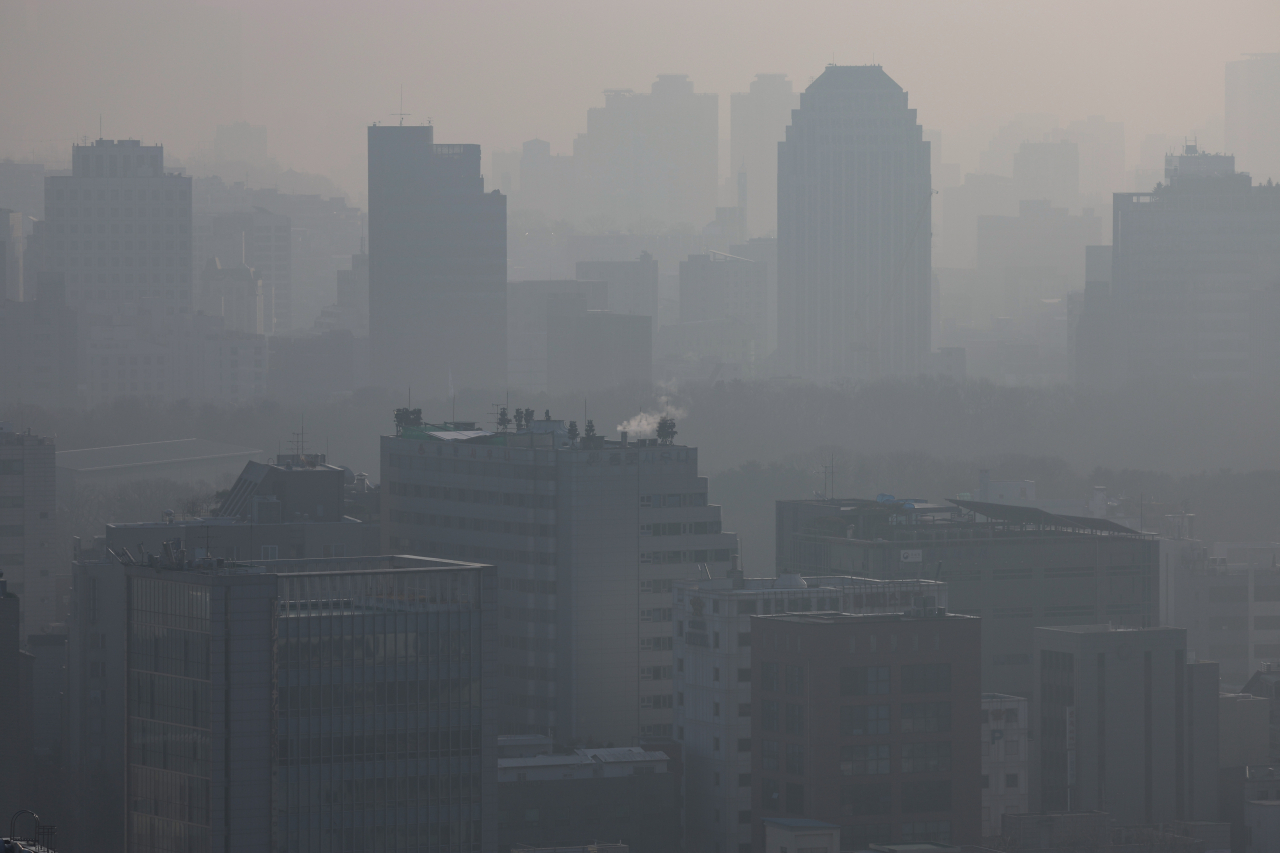Ultrafine dust levels this year could be severe: ministry
Workers, especially vulnerable groups, recommended to work flexibly when ultrafine dust levels high
By Lee Jung-jooPublished : Feb. 27, 2024 - 17:22

Ultrafine dust levels in March could be higher than previous years due to high pressure, higher-than-normal temperatures and a stagnant atmosphere, according to the Ministry of Environment on Tuesday.
As a measure to reduce exposure to higher ultrafine dust levels, the Environment Ministry stated that it recommends workers, especially those who have respiratory symptoms or those who are pregnant, to work flexibly if high fine dust levels persist for more than two days.
Flexible work includes spacing out commute hours, working from home and working part-time.
“By law, governors can recommend companies to enforce flexible work for everyone when fine dust levels are high," an official from the Environment Ministry official told The Korea Herald, referring to the Special Act on the Reduction and Management of Fine Dust. “However, as this regulation has not been put to active use in the past, the ministry decided to recommend regional governments to actively implement the law this year to better protect citizens’ health.”
The government has been implementing measures to reduce fine dust exposure when the concentration of ultrafine dust is higher than usual in March. From 2016 to 2023, the average ultrafine dust concentration levels reached 27.7 micrograms per cubic meter in March, while the levels reached 24.2, 26.7 and 27.1 micrograms per cubic meter in December, January and February, respectively. March also had the highest average number of days where ultrafine dust levels were marked as “bad” or worse, at nine days, while December recorded five days and January and February recorded seven days each.
In South Korea, fine dust levels of PM 2.5 above 35 micrograms per cubic meter are classified as “bad," while levels above 75 micrograms are “very bad,” which is significantly more relaxed than the international standards, as the World Health Organization’s air quality guidelines recommend countries to keep PM 2.5 levels below 15 micrograms.
According to the ministry's ultrafine dust response measures, flexible work is encouraged especially for sensitive and vulnerable groups when a “Requires Attention” special alert for ultrafine dust has been issued for more than two days, or when a “Warning” alert has been issued.
The “Requires Attention” alert is issued in Korea when average ultrafine dust concentration levels exceed 50 micrograms between midnight and 4 p.m. on the day of, or if ultrafine dust concentration levels are expected to exceed 75 micrograms the day after. “Warning” alerts are issued when concentration levels exceed 150 micrograms for more than two hours and when concentration levels are expected to exceed 75 micrograms the next day.
Meanwhile, following the government’s response measures, schools’ indoor air quality levels will be inspected in advance for the upcoming start of the school year. Subway stations and waiting rooms near train stations will also be wet cleaned more than three times a day and vehicles that clean roads with heavy traffic and pollution levels will also operate a maximum number of four times a day.
A total of 28 public coal-fired powerplant generators will also be shut down, an increase from last year’s numbers at 15. To prevent the illegal incineration of agricultural waste, intensive waste collection measures will also take place, as farming season officially begins in the spring.



















![[Today’s K-pop] Treasure to publish magazine for debut anniversary](http://res.heraldm.com/phpwas/restmb_idxmake.php?idx=642&simg=/content/image/2024/07/26/20240726050551_0.jpg&u=)